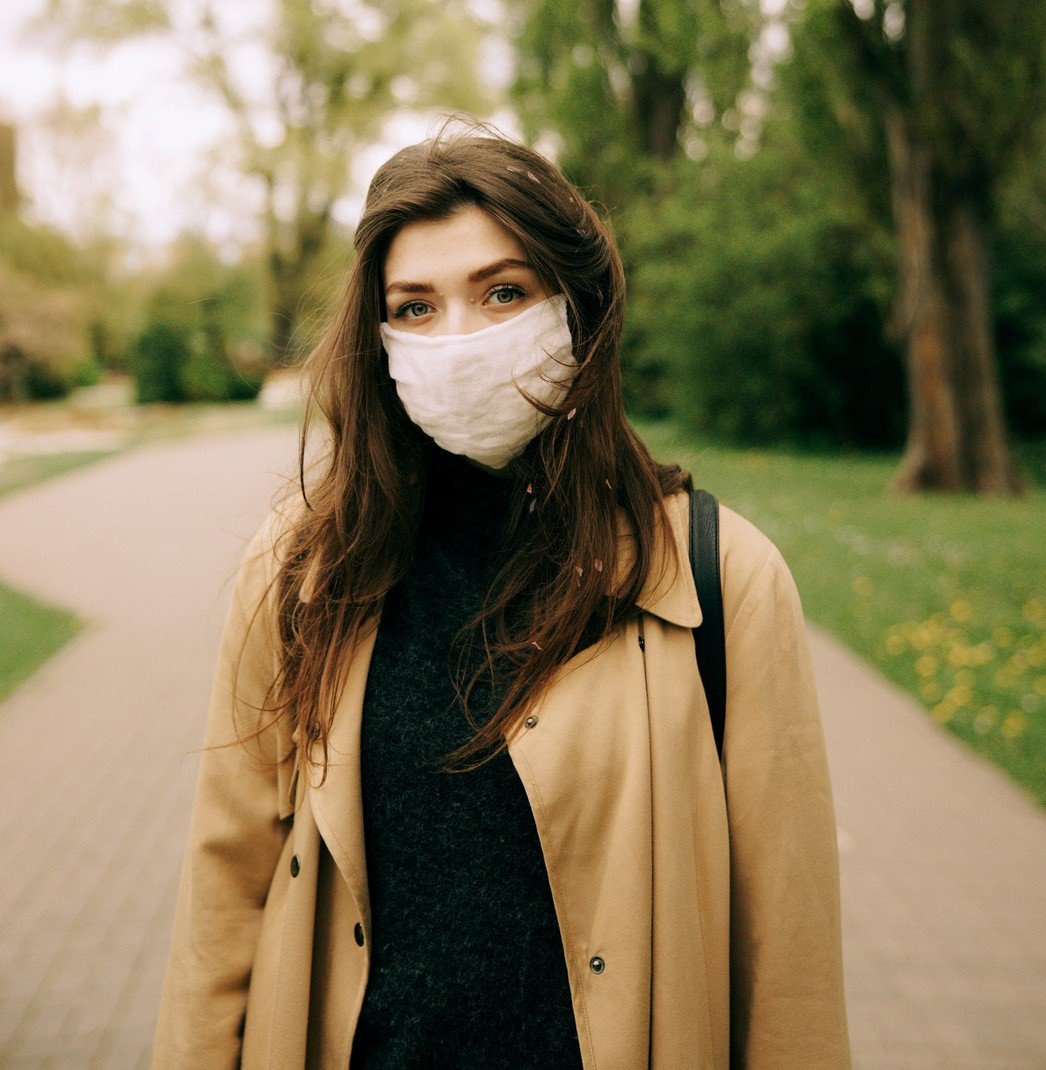
6 Tips for Treating Maskne
Let’s first define “maskne”—a term you’re most likely familiar with by now. As the name suggests, “maskne” is the newfound acne, bumps or general irritation of the face area where your protective mask goes over (which we should all be wearing in public according to CDC guidelines). While your skin barrier helps protect you in many ways, friction, rubbing, and sweat trapped underneath a mask can cause the skin to get irritated, leading to breakouts on our chin, mouth, and nose areas. The constant, no-air seal pressure from the mask, friction heat, and sweat can cause irritation, allergic reactions, acne, lines, and discoloration.
Additionally, stress–both physically on the skin barrier, and internal stress during these more challenging times—can contribute to maskne.
Although mask-wearing may be new to some, it has been commonplace for years in many parts of Asia (including South Korea) as a protective measure against “high-pollution” dust-storms that frequently blow in from neighboring countries or the region. Dealing with maskne isn’t a new phenomenon in Korea, which is why K-beauty skincare—thoughtful routines rooted in exceptional innovation, gentle formulas, unique ingredients, inside-outside results, and better value—offers some tried-and-true tips for keeping it at bay.
- Make Skin Barrier Strengthening Priority #1
Masks can be highly agitating to the skin, both by physically agitating and also by creating a moist, hot environment that can cause the skin to become more irritated. Keeping the skin barrier fortified can go a long way to preventing maskne. After all, your skin barrier is what prevents bad bacteria from going into the skin, and also what helps keep your skin resilient. It’s important to forego SLS-laden, drying cleansers an astringent-stripping toners, as this overwhelms skin with alcohol or too many acids at once.
Instead of a stripping toner, try a gentle toner that helps you tone, polish and exfoliate gently without over-drying skin. Switch to a hydrating, low-pH cleanser to avoid disrupting the skin barrier. You’ll also want to incorporate more ceramides into your skincare and fatty acids and nourishing lipids that don’t clog pores.
Bonus: as we begin paying attention to our skin barrier, this pays off for our skin way beyond issues like maskne.
2. Focus On Hydration, Not Eliminating Breakouts
We often associate hydration with dewy skin or we think about hydration during the dry, winter months. But hydration actually goes beyond dry or dull skin; having sufficient moisture/water levels within the skin can also help with maskne. When your skin is dehydrated and lacking moisture within, it can lead to an inflammatory response, which can then trigger more oil production, less cell turnover, and increased breakouts. When our masks are on, a moist, hot environment is created, making it more ideal for bacterial breakouts and a form of acne called acne mechanica.
Keeping your skin well hydrated can help skin become less vulnerable to breakouts. Drinking water won’t directly hydrate the skin (though it’s great for our health!), so be sure to reach for products that include ample levels of humectants (ingredients that bind moisture to the skin). The right kind of sheet-masking with hydrating, calming masks will also help drench skin with hydration while also providing soothing and antioxidative benefits.
3. Go Beyond Salicylic Acid – Try Centella Asiatica
Ultimately, maskne, like other forms of acne is tied to inflammation. Using products that have ingredients celebrated for their anti-inflammatory properties like niacinamide or centella asiatica (also known as gotu kola or tiger grass) can go a long way in helping to keep breakouts looking calm and clear.
4. Understand Your Acne Type
Once you spot the blemish, you’ll need to figure out its type. It can be acne mechanica, it can be irritation, it can be hormonal acne from increased stress, or it can even be dermatitis. Regardless, truly understanding and being aware of your acne type is a huge awareness play in Korea.
Acne patches are big in Korea because of the way they can tackle blemishes fast. And in the case of maskne, the added benefit is that they provide a protective covering that comes between your blemish and the potentially acne-inducing environment the mask creates.
5. Ease Into A Gentle, Acne-Focused Routine
Finally, using products that are formulated to help tackle blemishes is a great idea because the moist, hot environment and constant rubbing of the mask can more easily lead to acne mechanica.
But the key here is to not go from zero to ten all at once. Incorporate gentle, blemish-banishing formulas and be sure not to dry out your skin or agitate it, which can actually lead to more vulnerable skin and more breakouts. Sticking to chemical exfoliants rather than physical ones so as to not spread bacteria as you’re exfoliating is also a great idea. For a moisturizer, lightweight textures that work to actively calm skin with a medley of timeless Korean herbs known for their soothing properties is a popular choice.
The K-beauty approach to dealing with maskne is not too unlike the Korean beauty approach for skin in general–think gentle, long-term visible results, a holistic approach to deal with root causes and not just the symptoms, and a hydration-focused routine. Before you reach for a product that might be a bit too harsh for your skin, which can only exacerbate the issue, think about how a gentler approach can be helpful in assessing how you might want to approach your maskne.
5. Get Professional Help For Your Skin
And if all else fails, book a facial to help purify your skin in a way that you just can’t get at home. Call Botanica at 727-441-1711 to book one today!
Love,
Gen



Leave a Reply